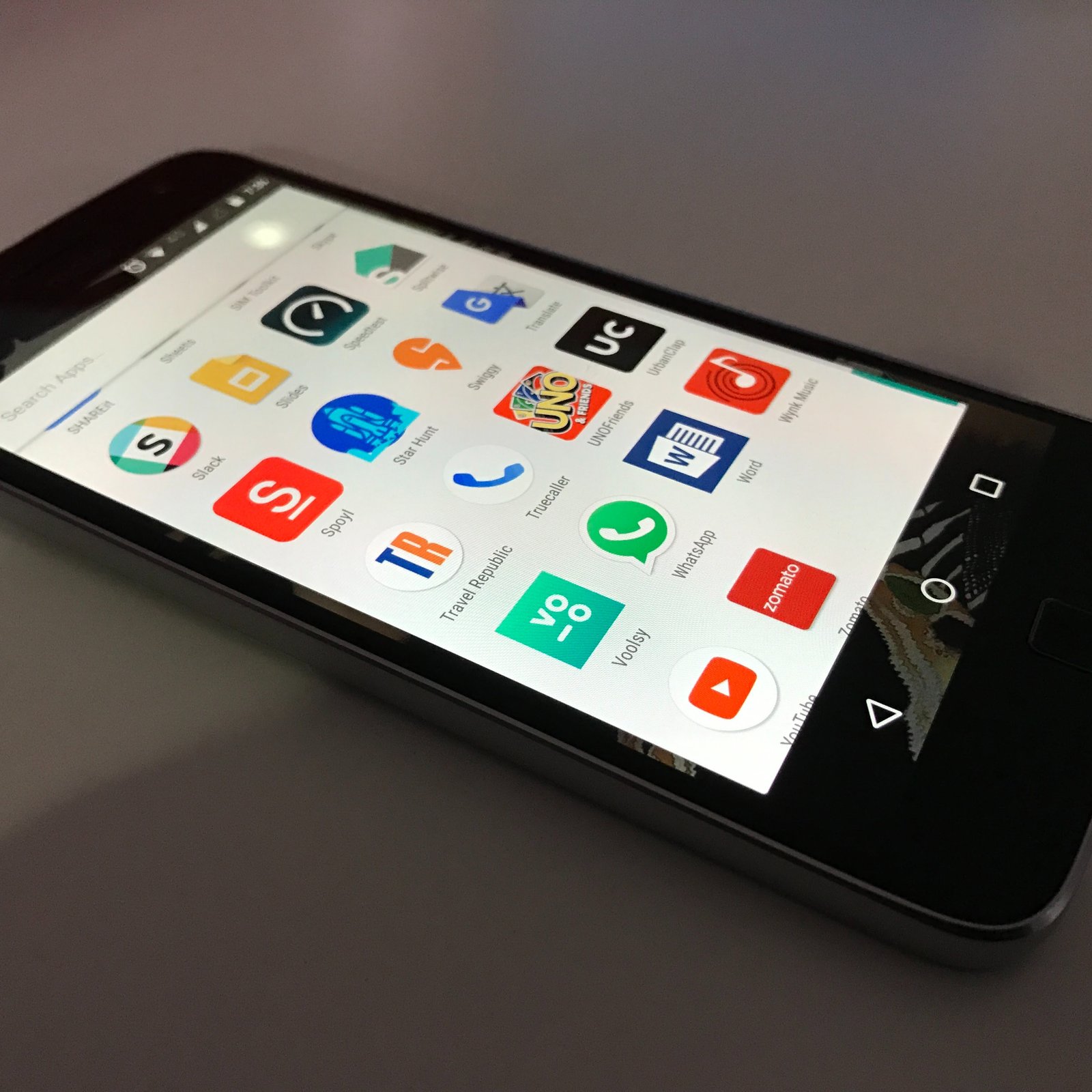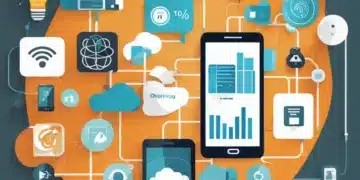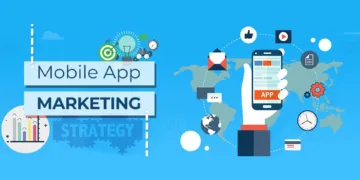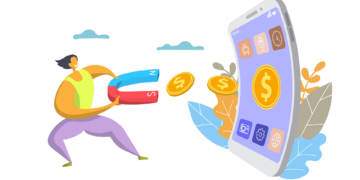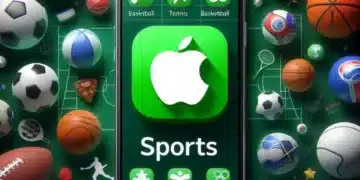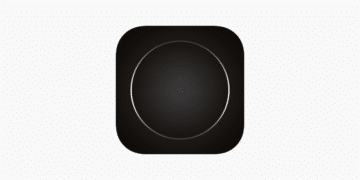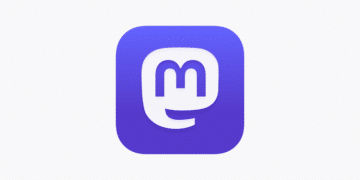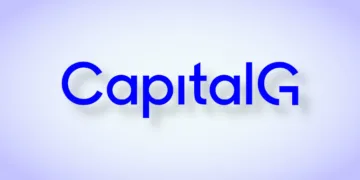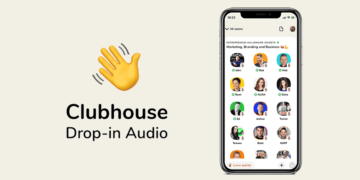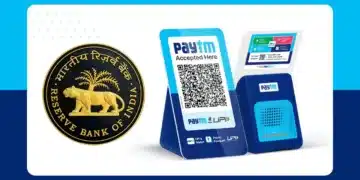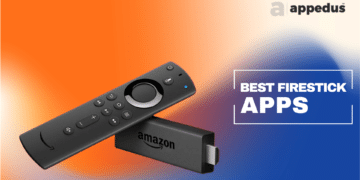Though Covid-19 impacted literally every industry, from education to logistics, no other field has come through such hardcore testing and profound adjustments as the healthcare sector. Due to the rapidly growing demands for the medical service’s scale and quality starting from 2020, this industry had to seize every opportunity out there to boost its resourcefulness.
To that end, rapid digitalization and transition to the web have become a proper remedy for the challenged mHealth market. As a bright result, a major part of medical services can now be reached right from the phone. In addition, an upgraded digital format of healthcare opens up great new opportunities for patients which were not available for them earlier.
mHealth Market Overview
The financial attractiveness of the mHealth market has experienced a decent improvement as well. For reference, in 2021, the global size of the mHealth market already amounted to USD $50.7B, while current estimates predict its annual rise of 11% at a compound annual growth rate from 2022 to 2030.
Boosted abilities of the mHealth market inspired a surge in related start-ups that practice innovative approaches to healthcare. Here are examples of some of the coolest apps that have popped up on the digital healthcare market in a recent couple of years:
- KRY app – Sweden health company provides 24/7 health assistance both through the user-friendly app and health centers.
- K-Health – a healthcare platform empowered by AI technology with a database of health interactions numbered into billions of records allows users access to professional medical care.
- CareZone – Enables their customers with fast and proactive creation of medication lists and other vital health information effective management.
- PatientsLikeMe – Community-oriented app that allows users to exercise mutual exchange of health-related information, such as symptoms, treatments, and conditions.
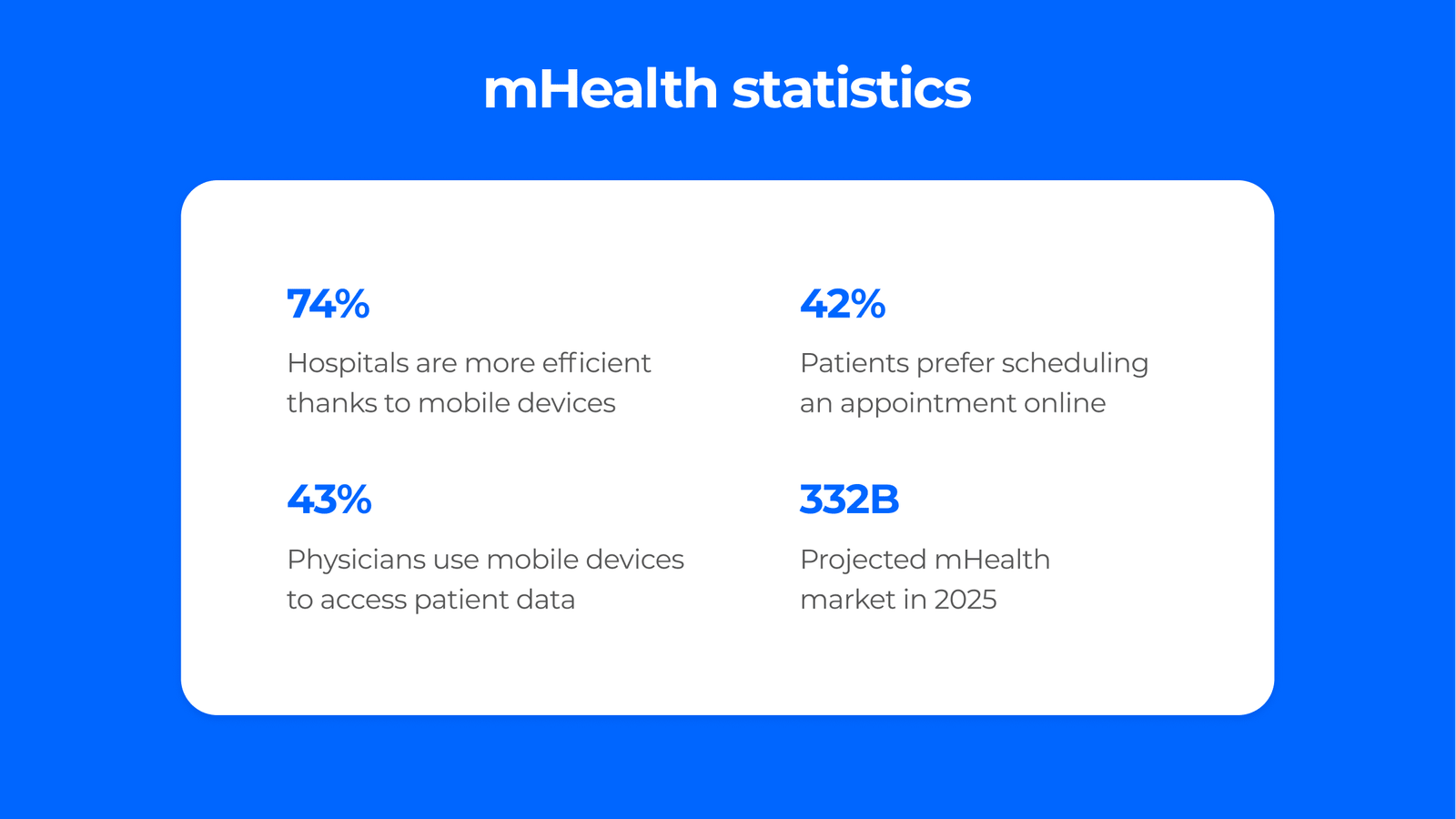
Types of Healthcare Apps
There are thousands of healthcare apps on Google Play and the App Store at the moment. For the sake of convenience, this diversity is narrowed down into two main categories depending on the target user: apps for professionals (medical specialists and facilities) and apps for patients.
Apps for professionals
Apps in this category are intended for staff of medical facilities and tend to have more advanced functionality compared to patient-oriented applications. These apps are further divided into several subcategories depending on the exact goal they strive to fulfill.
- Medical networking
- Billing apps
- Telehealth
- Medical prescription apps
- Apps for medical records
Apps for patients
Although it might seem the opposite is true, apps for patients are no less sophisticated and multi-functional than their fellow software for doctors. Today, healthcare apps do not only provide users with an opportunity to get medical advice right from their mobiles but offer a broad set of more narrowly specialized capabilities.
- Mental health apps
- Health monitoring
- Medical education
- Medication trackers
- Dieting apps
- Healthy lifestyle apps
Healthcare App Development Process Step-By-Step
Now that you know what apps are there and the goals they meet, it’s time to think about the actual development of one and the steps to cover in the process!
Problem identification
When creating an app, after saying, “Houston, we have a problem,” it’s critical to specify which one. The last is more than true in the case of a healthcare app. Depending on the gap your app is going to supply, the rest of the key factors will be unblurred:
- Target audience
- Competitors’ list and number
- Features list
- Challenges to meet (and overcome)
Select a monetization model
This step is connected with effective revenue generation. The range of monetization models available on the market includes subscription, one-time payment, donations, in-app ads, and freemium. When it comes to healthcare apps, the list of payment models tailored for their specific needs typically boils down to:
- Subscription. Implies paid renovation of access to an app’s features on a weekly/monthly/yearly basis.
- One-time payment. Users pay for their access to the app’s features only once, without any further charges.
- Freemium. The app has a paid version with an advanced set of capabilities for users.
Deciding on a target audience
Target audience identification is not simple, but choosing it right gives you a pretty clear image of your potential end-user. Like all realistic portraits, it includes many features: country of residence, age, gender, education, average income, and even cultural and religious background.
When deciding on each compound of your target audience’s portrait, the final verdict is always about matching your app’s offer with real user expectations. For instance, use question & answer platforms to make sure that a chosen segment of people is interested in the service.
UI/UX design development
Although UI/UX design integration is a creative part that does spark our imagination, the right hemisphere also has some work to do here. There are a few rules to stick to to make your healthcare app design attractive both in its look and use. The basic recommendations are as follows:
- Ensure that your design is user-friendly
- Make the customer journey clear through and through
- Let your design be responsive
MVP building
Minimal Viable Product (MVP) refers to the first version of your healthcare app that can be appreciated on the market. MVP includes all features without which your app cannot be imagined. As a rule, the mHealth market’s MVPs go with the next features:
- Registration
- Profile screen
- Search & filter
- Rating & review
- Voice & video calls
- Online chat
- Payment options
Getting a feedback
The audience is your best critic. Regardless of whether you receive enthusiastic accolades or a harsh decrial, both reactions should be taken into close consideration. Your audience’s feedback is a priceless indicator of your app’s legitimacy. Is it really as multi-functional and user-friendly as you want to believe, or should certain adjustments be implemented to fit the target?
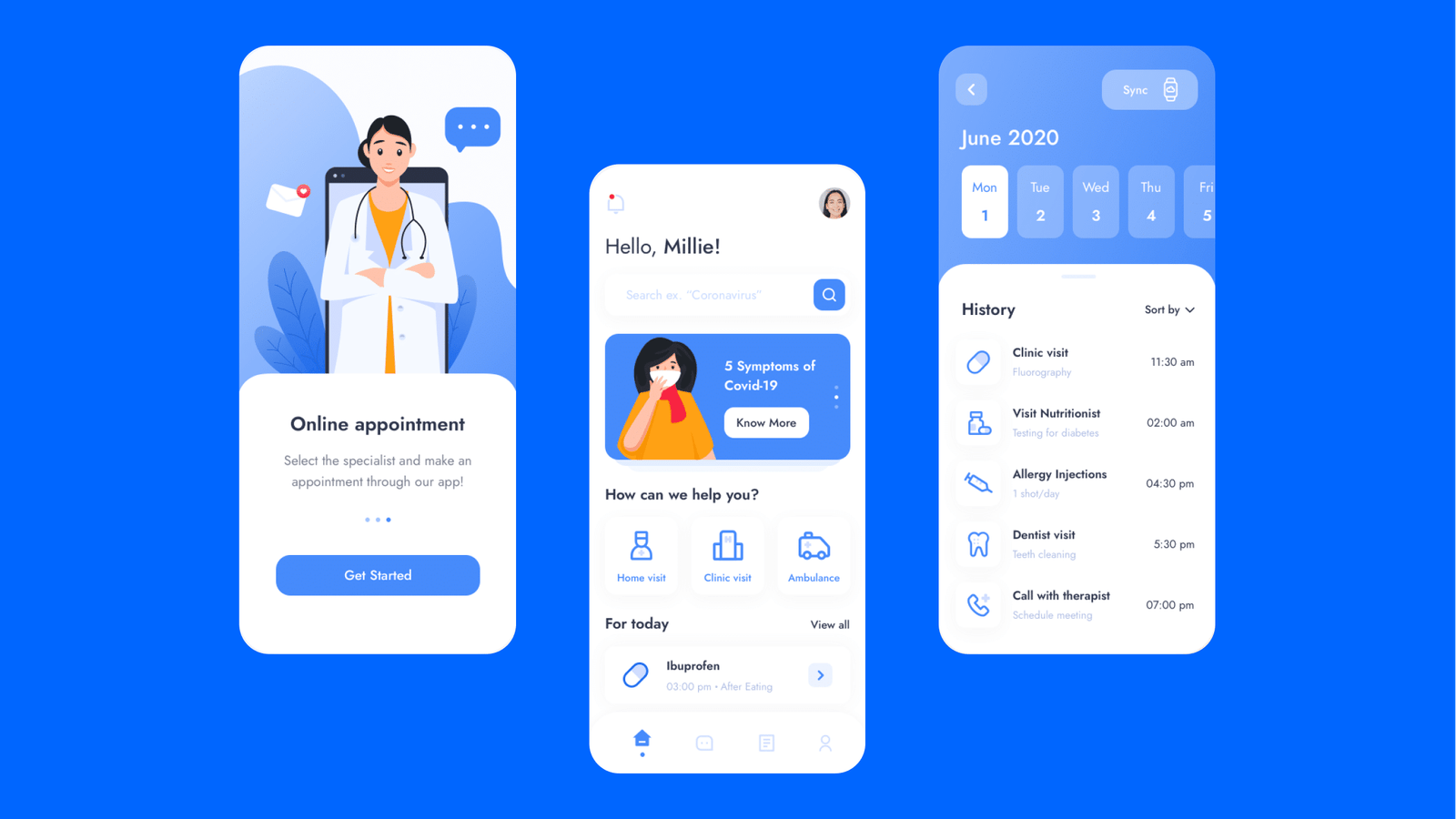
Compliances to Consider in Health App Development
When launching a healthcare app, it is important to have accurate and up-to-date information about regulations on the market. If the app does not comply with the relevant regulations, it will simply be forbidden to use. These legal and privacy regulations slightly vary in their content across different regions:
- HIPAA: Regulation of the US market that obliges all apps that contain Protected Health Information (PHI) contend with the requirements of integrity, availability, and confidentiality
- CCPA: It’s the US equivalent of GDPR in Europe managing data confidentiality and collecting.
- GDPR: Set of rules that exercise personal data protection within the European Union since 2018.
- NIST: Another pack of standards and technologies made in the USA devoted to ensuring cybersecurity for users of health apps.
- HiTECH: These US regulations stand on guard of the Electronic Health Records (EHR) security.
- PIPEDA: If your health app is about to be launched on the Canadian market, make sure to adhere to the PIPEDA provision (which, by the way, are very similar to GDPR).
The Cost of Healthcare Application Development
Now it’s time to determine how much it costs to create an app. On average, launching an app in the healthcare field approximately amounts to USD180,000-200,000. The estimate is based on the developers’ experience is an average hourly rate of USD50. This sum has to do with the MVP version of your product and consists of multiple components in terms of developing features and staff included.
Feature |
Development time (in hours) |
Cost ($) |
| Registration and log in (Patient + physician) | 76 | 2660 |
| Profile screen (Patient + physician) | 81 | 2835 |
| Search, filter options, and ratings | 103 | 3605 |
| Appointment scheduling (Patient + physician) | 185 | 6475 |
| Video and voice calls (Patient + physician) | 136 | 4760 |
| Online chat (Patient + physician) | 121 | 4235 |
| Payment options | 36 | 1260 |
| Admin panel | 271 | 9485 |
| Backend part | 1120 | 39200 |
| Frameworks and libraries implementation | 56 | 1960 |
| Code documentation | 17 | 595 |
| Total | 2202 | 77070 |
Behind any successful app development stands a reliable team of IT professionals. One of the most popular ways to get such a team nowadays is outsourcing. Each specialist’s work put together makes up the final cost, considering the average hourly rates ($30-60).
Development team member |
Task |
Approximate hours |
Approx cost ($) |
| iOS and Android developers | MVP features development | 1280 | 89600 |
| Frontend developers | Admin panel development | 160 | 5600 |
| Backend developers | Backend part development | 1120 | 39200 |
| UI/UX designers | Wireframes and mockups creation | 160 | 4800 |
| Project Manager services | Development process overseeing, development reports | 400 | 14000 |
| QA engineer services | App testing, bug reports creation | 600 | 15000 |
| DevOps | Development process automation, implementation of DevOps methodologies | 120 | 4200 |
| Business analyst | Discovery phase, creation of final estimate and specification | 160 | 4000 |
| Team lead | Project architecture development, code review | 180 | 6300 |
| Total | 4180 | 182700 | |
The cost of the service provided by a remote development team varies depending on the region of its location. The estimate we offer above is based on the development cost average for Central Europe. Again, all calculations are approximate as each application requires an individual approach and unique solutions.
If you are ready to dip your toe into launching your own healthcare app, you need to answer every “how” question from your project’s perspective. To that end, the assistance of the healthcare software development company with domain experience is essential. It will examine your requirements and offer an optimal technical solution for your business growth.

